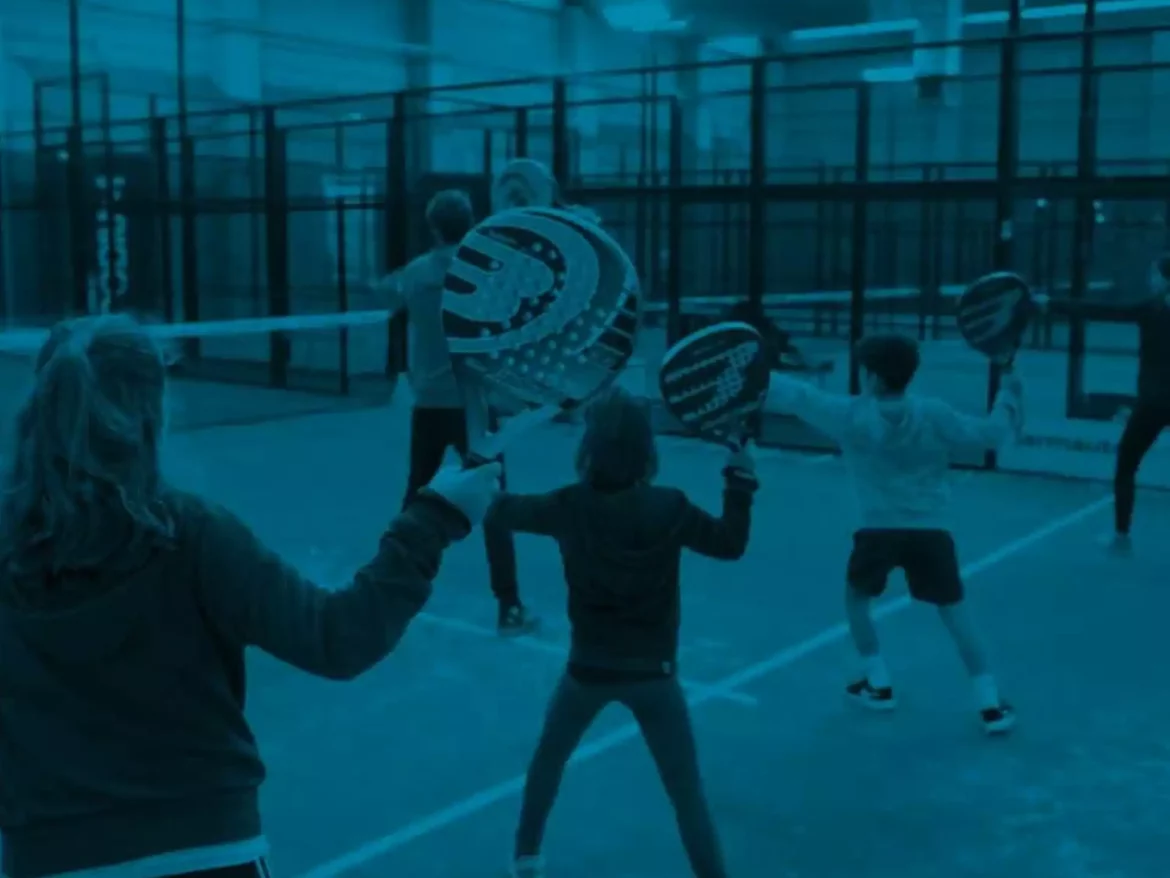Kids’ Padel
If you are a padel coach for children, you will know that teaching kids is even more difficult than teaching adults.
Teaching basic padel is not an easy task and that’s why today I want to give you some of the most used resources to be able to adapt your proposals.
Using these tools, your more analytical exercises, as well as the games or proposals played, can have nuances that help children to play more easily.
Adapting the level of difficulty of your sessions is key so that everything flows and they can have fun as well as learn.
The 5 resources for your progressions:
1 Ball rolling: Rolling the ball along the ground is an easy resource for any age group.
Advantages:
- This is a way of eliminating the need for your students to have to calculate the bounce.
- They will have to calculate the time it takes for the ball to travel through a given space on the court.
- It will be easier for them to know the trajectory of the ball.
- It is a good way to start getting familiar with the behaviour of the ball and the descriptive geometry of the different wall rebounds (side and backwall).
- It is easier to trap for games.
- It allows the student to make more frames of the ball with more accuracy and that gives more guarantee of consistency in their game or exercise.
- The coach can have a high precision with this throw.
Disadvantages:
- It is not a regulatory requirement.
- It does not help to calculate the bounce.
- It does not help to calculate the parabola of the ball.
- It is not a real impact point with the ball.
- It often forces you into a forced position to receive the ball.
- There is a risk that it can be stepped on by a partner or the student.
- The cadence is somewhat slower than with the racket.
2 Double bounce ball: if you allow the ball to bounce twice before it is hit, everything will be easier.
Advantages:
- They have more time to hit.
- Reading the ball is made easier by having more time.
- They have a second chance to read the ball.
- After the first bounce, the ball loses some of its speed.
- The second bounce will be lower and more in line with its height.
- It is a way of improving the readings of the parabola since two are described.
Disadvantages:
- This is also not a regulation in children’s padel (at least for the moment).
- The throw requires more precision on the part of the coach.
- It is not good for them to always get used to having two bounces.
- The speed of reading and thinking decreases, it is not interesting to frequent it.
3 Balls with lower pressure: are usually available in three colours – red, orange and green. They all serve the same function at different levels.
Advantages:
- They have less bounce.
- They allow more reading time.
- They are lighter.
- More pleasant to the touch to be able to “feel” the ball on the racket.
- They help the game to be less fast, more technical and tactical.
- They help to have more control in the strokes and that can be in favour of points and games with more continuity.
Disadvantages:
- They are also not regulatory to this day.
- They are not usually available in most clubs.
4 Lateral court: Turning one side of the court into a ” padel court with reduced dimensions ” is a resource that helps the students.
Advantages:
- The proportions are more in line with its capabilities.
- The offsets are not as large.
- The ball bounces from closer.
- They don’t have to use as much strength but more precision.
- It is a good way to familiarise themselves with the walls.
- It is a natural adaptation to their motor development.
Disadvantages:
- Walls and railings are not in accordance with the real dimensions of a court.
- You should not get used to play only in these dimensions.
5 Hand throwing: is a good throwing method that adapts the arrival of the ball to the youngest children.
Advantages:
- The coach can be very accurate in the throw, which is often required for them to have a good impact point.
- It is easy to throw two balls at the same time (one with each hand to two different students).
- It allows us to be closer to the student.
- It is a simple way to change types of throws if we want to individualise the feeding: rolling, two bounces, one bounce or none at all.
Disadvantages:
- Being in close proximity can become a disadvantage for safety reasons.
- It is not always ideal and we should vary our feeding.
- We should not get our students used to static hitting against balls that arrive in “perfect” conditions with this type of feeding.
I hope these resources will help you to load your children’s padel sessions with quality training.
If you would like more information or are interested in learning more about this area, you can consult our online and face-to-face certifications at: Certified Padel Coach Kids – PadelMBA


